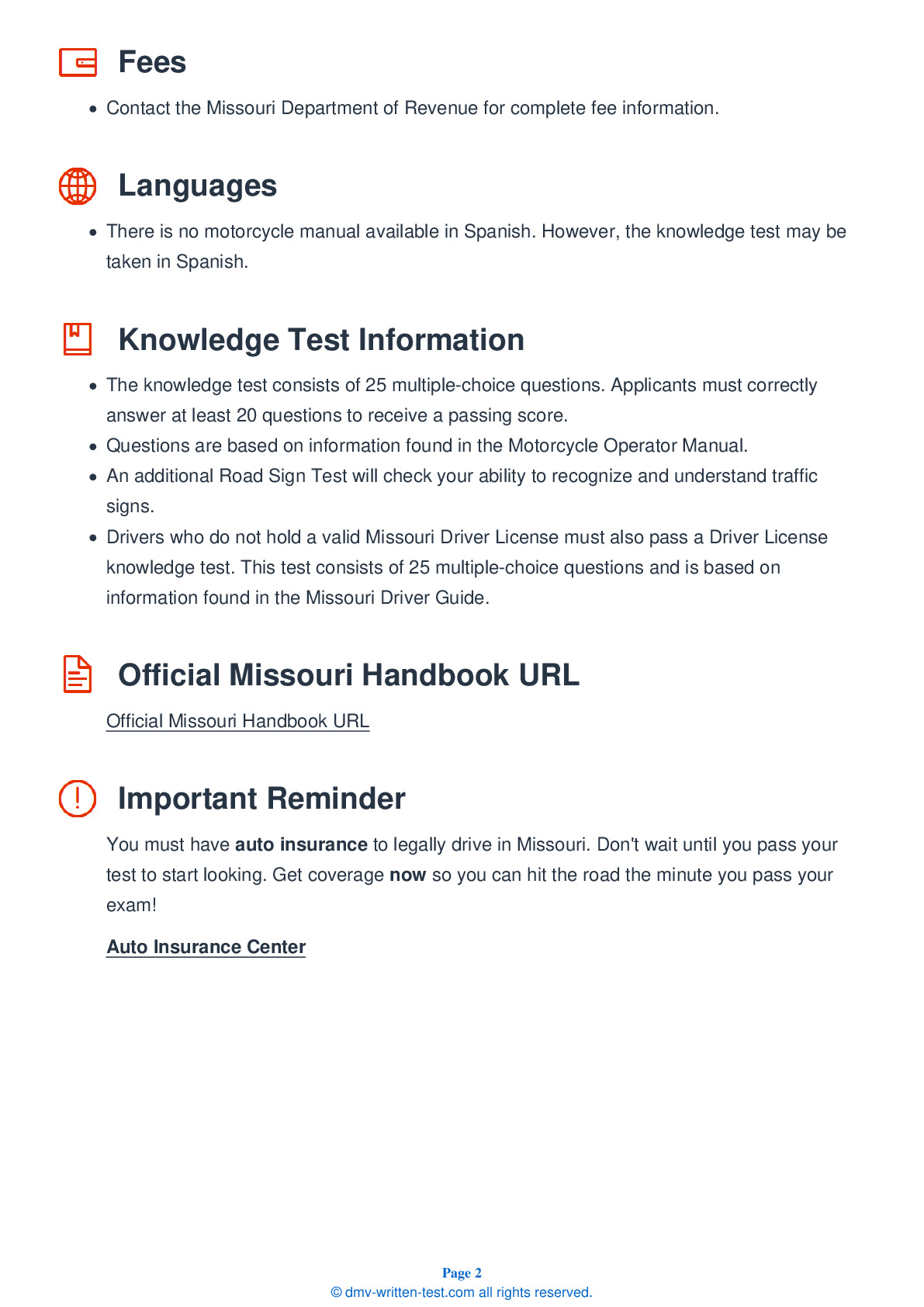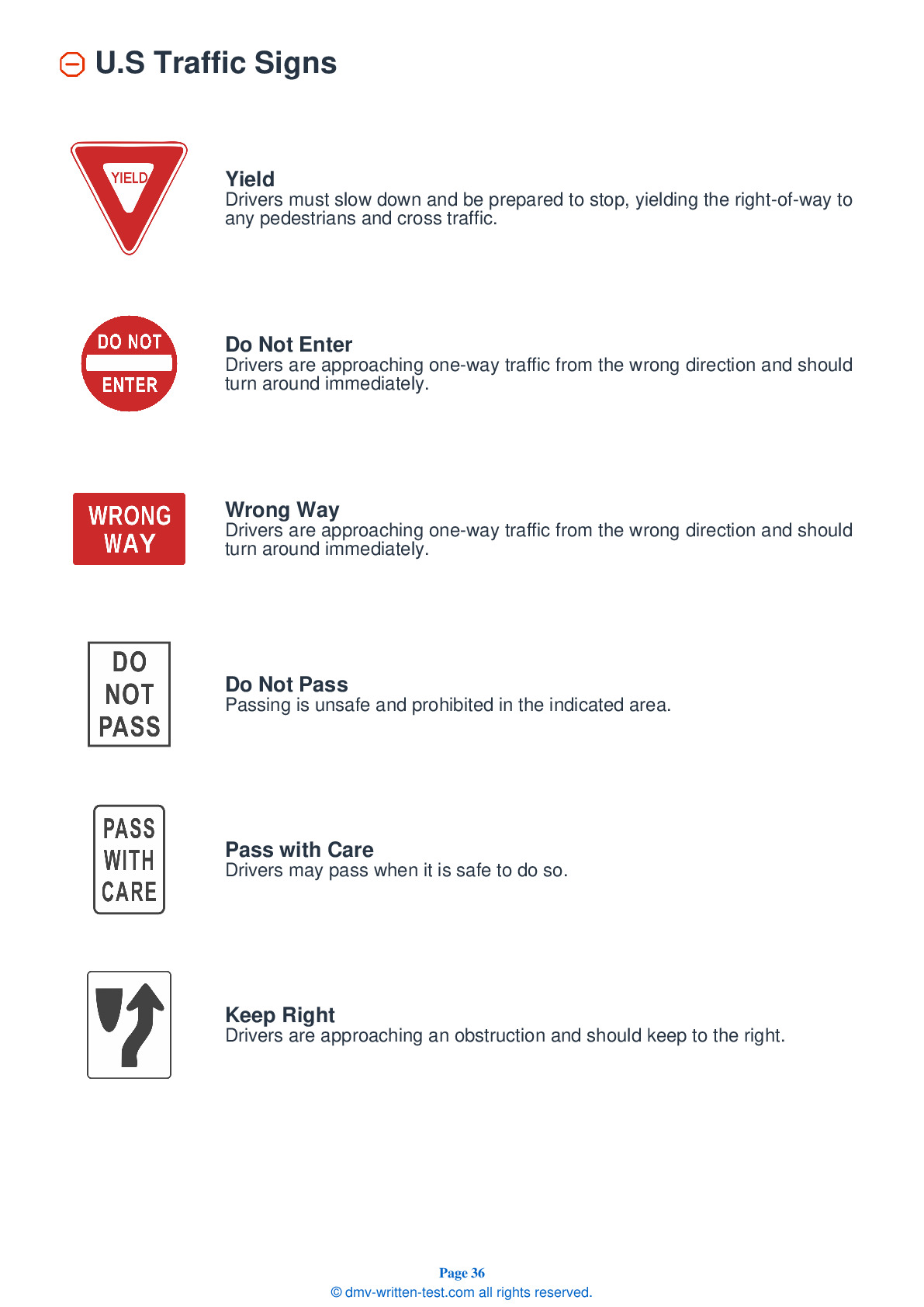2025 Missouri Motorcycle Permit Test 4
The following questions are from real DMV written motorcycle permit tests. These are some of the actual permit questions you will face in Missouri when getting your motorcycle learners permit. Each motorcycle theory practice test question has three answer choices. Select one answer for each question and select "grade this section." You can find this button at the bottom of the drivers license quiz. For a complete list of questions and answers for Missouri please visit https://cheat-sheets.dmv-written-test.com/en/missouri/motorcycle.
Number of Tests
Number of Question
Passing Score
1. If only one alcoholic drink is consumed:
Explanation
As little as one alcoholic drink can significantly affect the skills that are needed for safe riding. The only way to remove the alcohol content of a drink from your body is to allow your body time to eliminate it.
2. Signals on a motorcycle:
Explanation
Because motorcyclists are more vulnerable than the drivers of cars and trucks, appropriate use of signals by motorcyclists is even more important than it is for other drivers.
3. You should completely check your motorcycle:
Explanation
A motorcycle requires more frequent attention than a car. Make a complete check of your motorcycle before every ride.
4. Which types of brakes do most motorcycles have?
Explanation
Motorcycles generally have one brake for each wheel. The front brake carries more braking power than the rear brake.
5. Riding with a passenger:
Explanation
A passenger puts extra weight on a motorcycle, which causes the motorcycle to handle differently. Only experienced riders should carry passengers.
6. When riding a motorcycle, clothing:
Explanation




